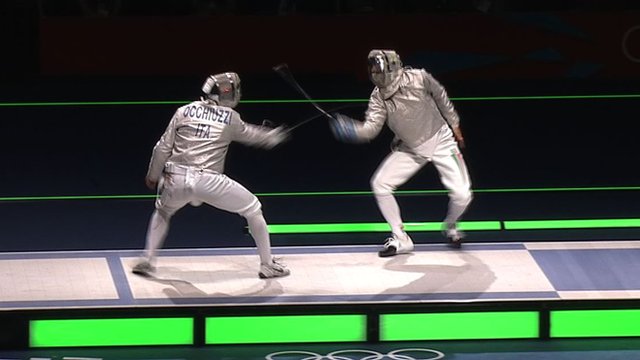When I first got started with HEMA, I was picking up weekly hand injuries — bruised fingers, finger bones, knuckles, black fingernails, that sort of thing. Now, part of this was down to poor hand protection, and lacrosse gloves went a long way towards preventing some of the worst injuries. But, at the end of the day, lacrosse gloves are meant for lacrosse and still don’t quite cut it when it comes to adequate HEMA hand protection. This is because lacrosse gloves have many joint areas where there is little or no padding, and the fingertips are also slightly exposed. You won’t realize this is a problem until you take a whack to the fingertips and the irrepressible nerve-damage tears start rolling.
And take a whack to the fingertips, you will. In HEMA (and, I assume, in lots of other martial arts), your hands are the things that offend your opponent. They may be attached to a sword, a dagger, or they may be all by their handsy lonesomes, just doing unarmed stuff (abrazare, to my fellow Fiore students). As such, they present the greatest threat (kicking happens, but is minimal, since it decreases stability and opens you up to throws), and they’re also an extremely valid target. In movies, a swordfight usually ends when someone gets cut straight in half from stem to stern, or run through to the hilt. In reality, sniping somebody’s hand with your blade before they have a chance to throw a cut could just as easily end a fight, or facilitate a quick end. After all, if you can’t hold a sword, and the other guy can, you’re almost definitely going to lose. Based on the bruises I’ve picked up from blunt swords in sparring, I’d hazard an educated guess that lopped off fingers and hands would have been a common injury when it comes to cut-oriented sword duels.
So, we’ve established that cutting your opponent’s hands is a great idea, and one often overlooked by novice fencers. But, let’s say you’re fighting someone who does know to attack the hands — what then?

If you’re using a later period sword (late Medieval/Renaissance) with a complex hilt, with all sorts of metal bars wrapping around your sword hand, or even the later cup-hilts (think: Three Musketeer swords), this isn’t as big a deal. The hilt will do most of the work protecting your hand, and you can therefore present your sword hand forward, relaxed in the knowledge that your hand will probably be safe, and now your sword is already closer to your opponent, threatening them.

However, if you’re practicing earlier period fencing, say with a longsword, such hand protection is not available. You have a crossguard, maybe some side rings (but usually not), and the blade itself as protection. But, since they don’t surround your hand, you need to employ these things actively.
First and foremost, this has an immediate effect on hand position when it comes to the guards. As I mentioned, a complex hilted sword may be held out front, even with the arm forward. But with a simpler, cruciform hilt, this is very risky as the unprotected hands, if outstretched, are an easy target. Of course, the hands must be placed at risk at some point, in order to make a strike. The goal with these older swords, then, is to keep your hands close to your body (or behind you, depending on the guard) up until the very moment when you make a strike. This mitigates the danger to your hands by minimizing the amount of time they’re vulnerable. It also means that, though they have become vulnerable, you are also giving your opponent something else to deal with, since you’re making a strike. If the opponent wants to survive, he’ll have to prioritize making some sort of parry against your blade before he can worry about cutting your hands or arms (or head, or body, etc.). It’s a bit like a boxer — the hands are tight with the body, ready to defend, until the moment they’re being employed for an offensive movement.
The manner of the strike is also important. An important thing to keep in mind — and this is something that may feel unnatural at first — is to lead with the blade. It’s common knowledge among fencers that this has the benefit of providing the least amount of telegraphing to your opponent, thus presenting him with minimal time to react. But I think this also has the added value of aligning your hands in such a way that the crossguard always comes forward before your hands do. Basically, whenever your hands are in front, the blade and crossguard should be in-fronter. It’s extremely important to impede your opponent’s ability to easily reach your hands by putting as much metal in front of them as possible.
So, when making a strike, you begin with the blade (generating most of the power with your waist), then almost immediately after, following through with the legs to close the distance and set yourself up for the next action (entering another guard, sidestepping, etc.). Compared to swinging a baseball bat, this will feel unnatural at first, and you may wonder why it needs to be so different. The answer is because, in baseball, nobody is trying to cut your hands off (or bruise them, anyway).
You’ll also want to be aware of how you position your crossguard. Think about the guards/postas you’re using, and which ones provide a defense against particular strikes. When you’re able to guess where a strike from your opponent might come from and where it might try to land on you, you can start to think about twisting your grip a bit in order to line up the length of your crossguard with the potential path of your opponent’s blade. Not only will this protect your hands, it will present you with some cool blade trapping and disarm opportunities during that split second where the other guy’s blade is caught up in your hilt. It’s also a good idea — though this is by no means employed by everyone — to leave a bit of space between the crossguard and the top of your lead hand. This can make the difference between catching a blade on your crossguard and it still cutting your hand, and catching the blade without any contact with your lead hand at all.
More than buying lacrosse gloves and fingertip inserts, wrapping my head around how I present my hands defensively and offensively has greatly reduced the number of hand injuries I take from HEMA sparring. If you have a job that requires hands — like, using a computer, or digging ditches, or working at a massage parlor — it’s a good thing to keep them generally operational. Finger explosions are a real concern. On that note, if there are any engineer types out there, there is still a vacuum when it comes to effective, mass-produced, economical HEMA gloves, and many of us are constantly searching for something that provides a good amount of protection, but also allows for dexterous manipulation of the hilt.
Anyway, here’s a totally unrelated video from Axel Pettersson where he shows off some cool half-swording techniques:




